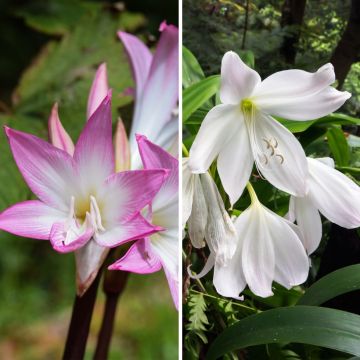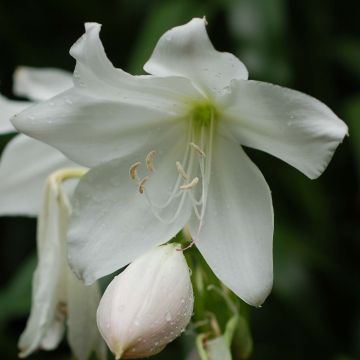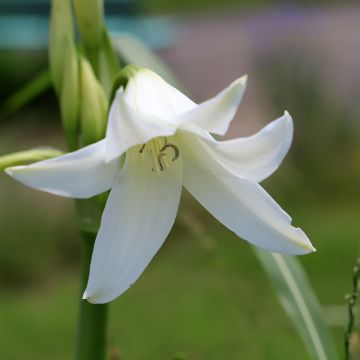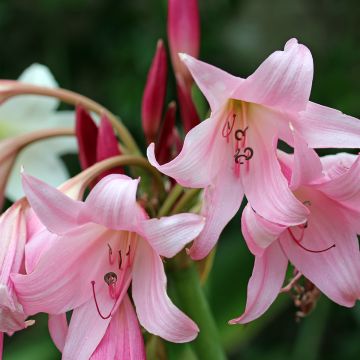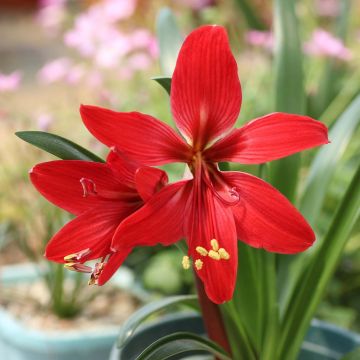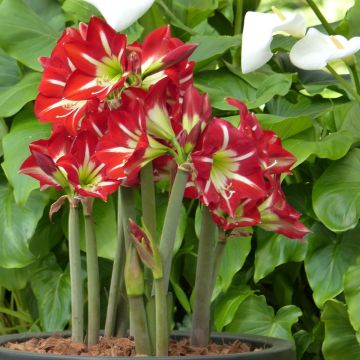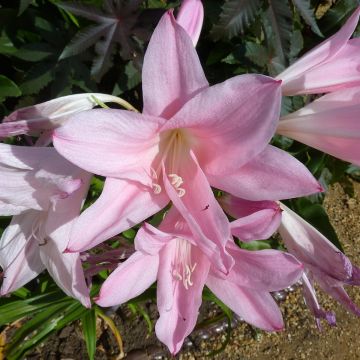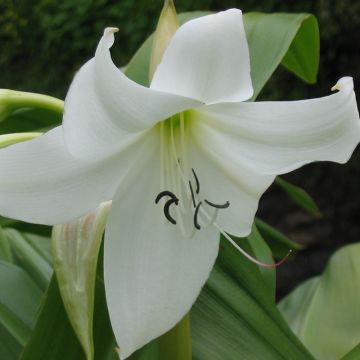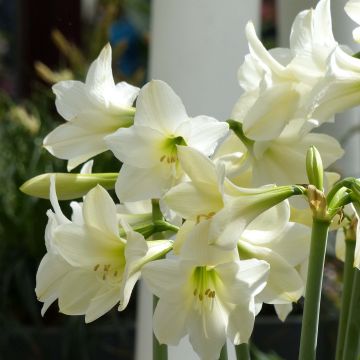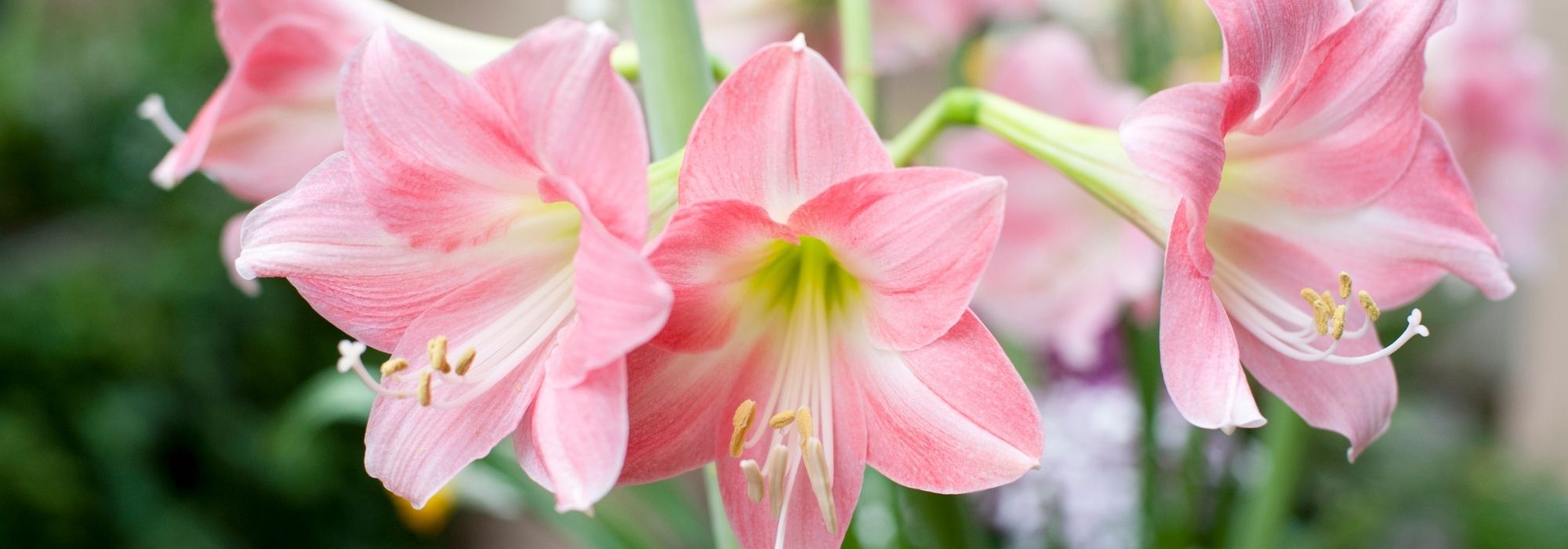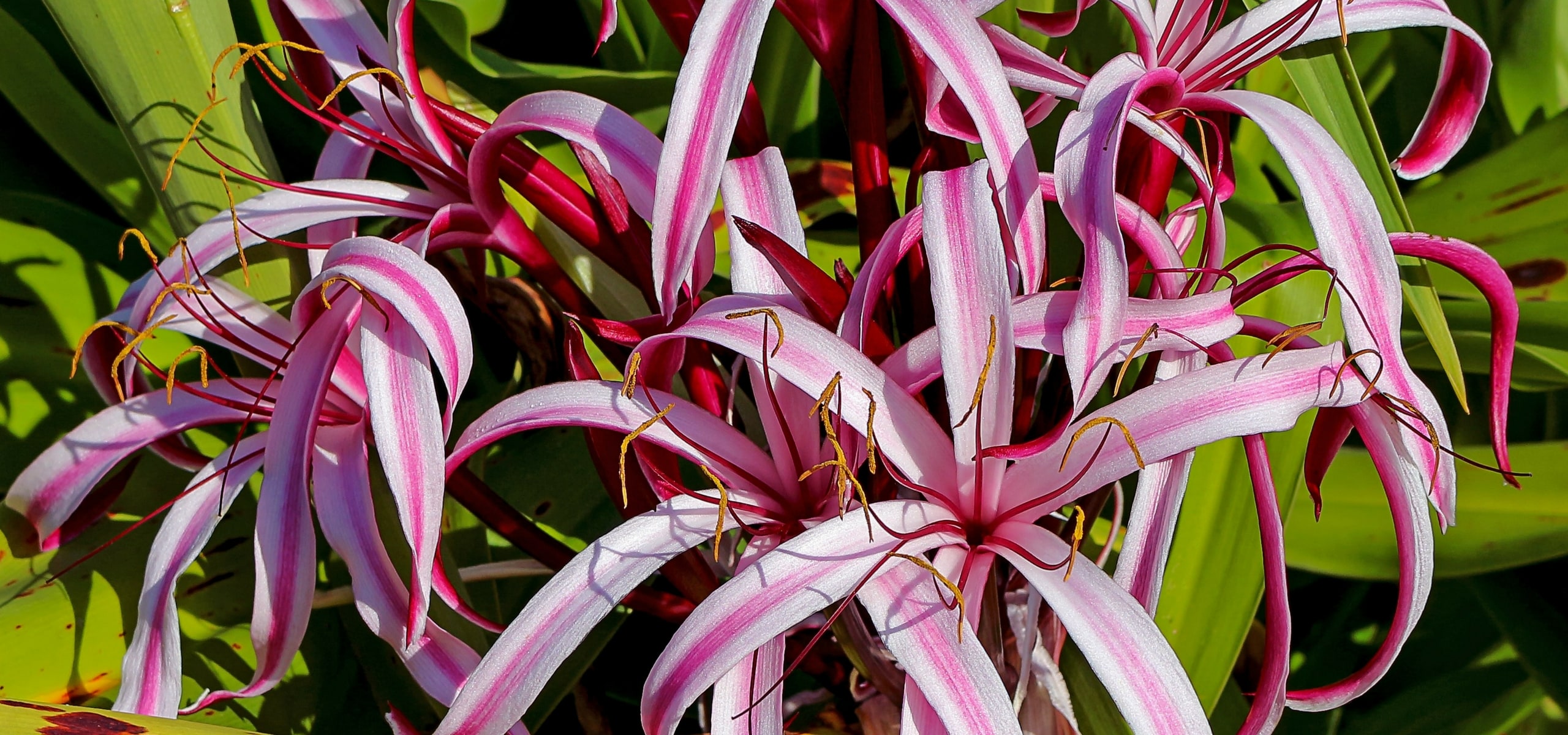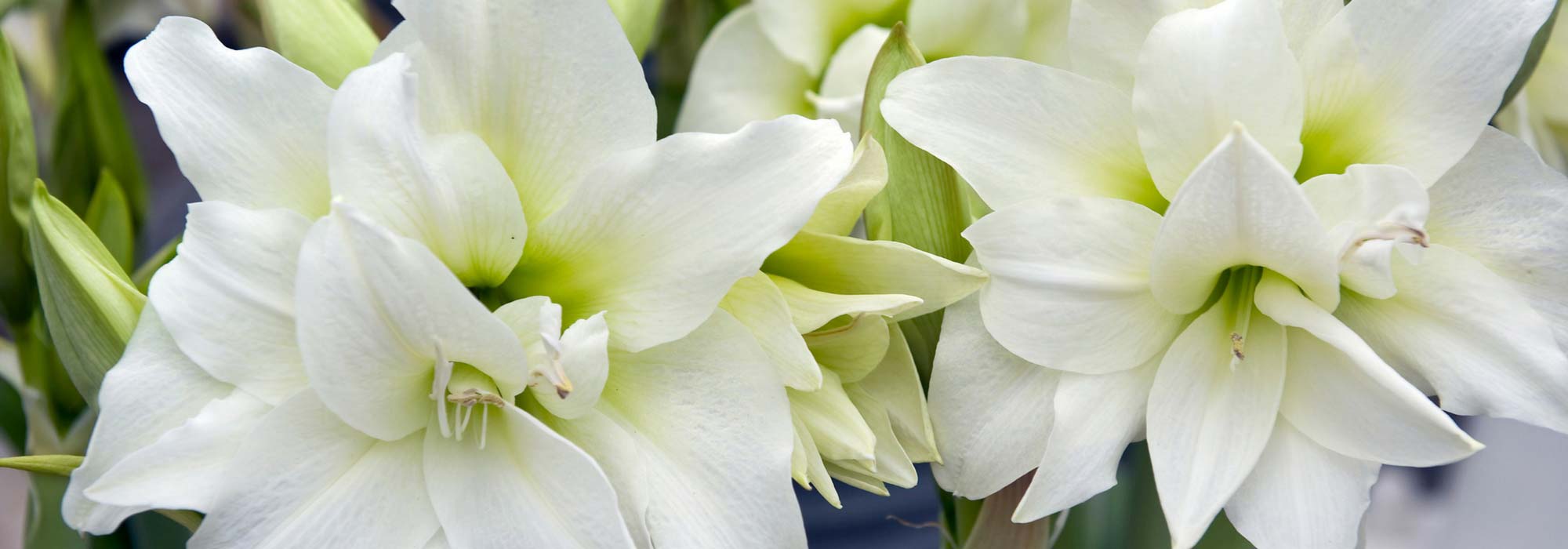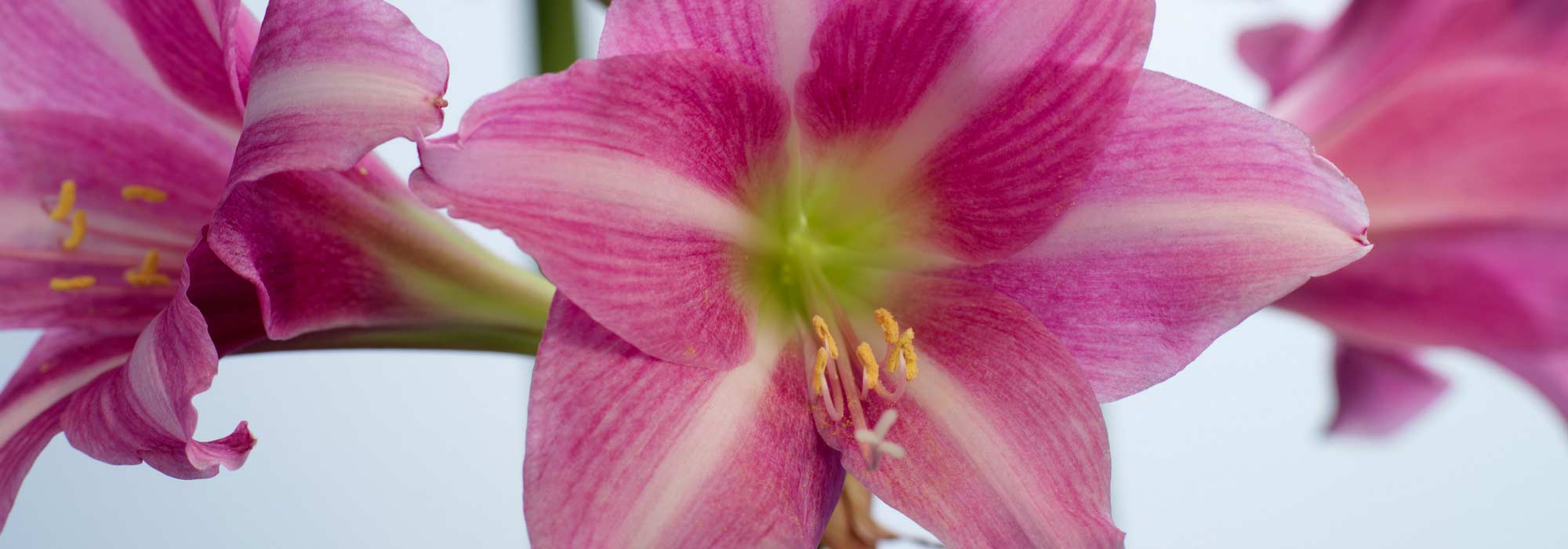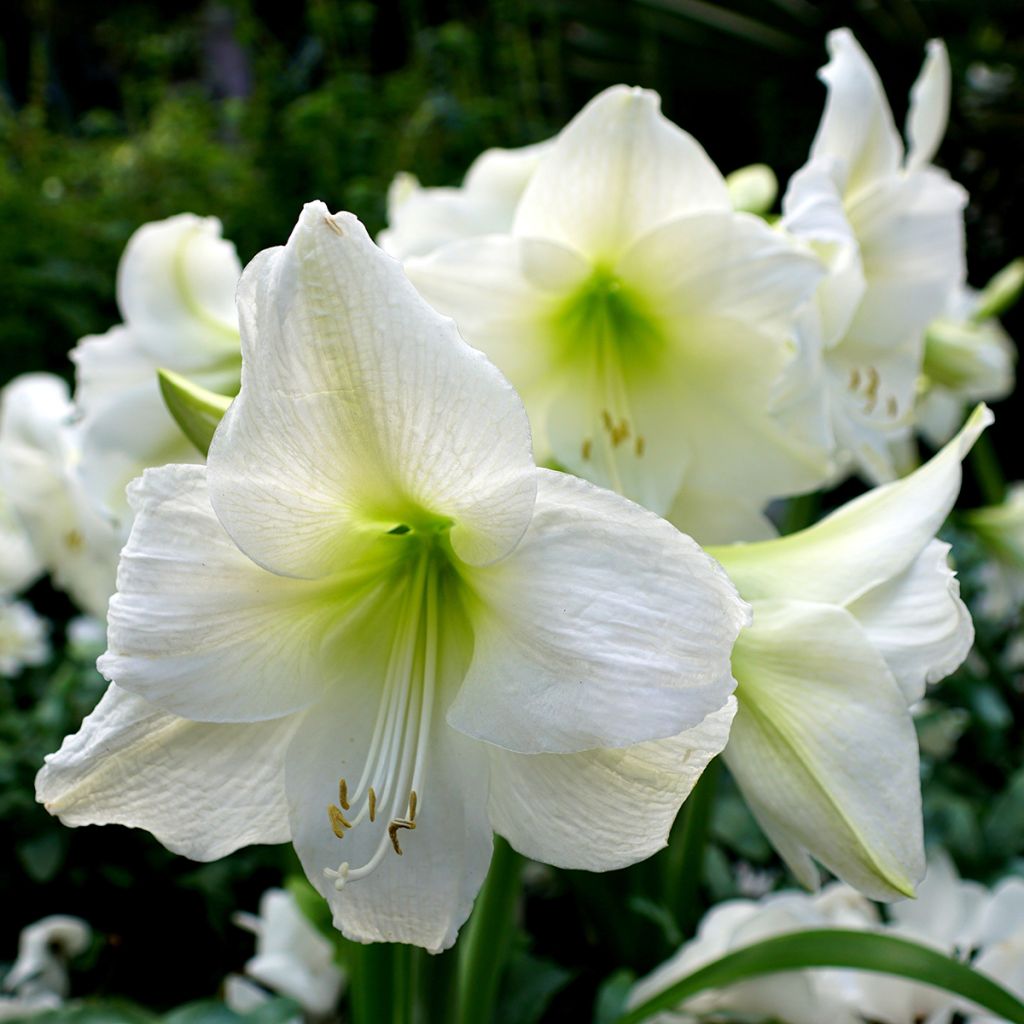

Amaryllis belladonna Ludwig Dazzler
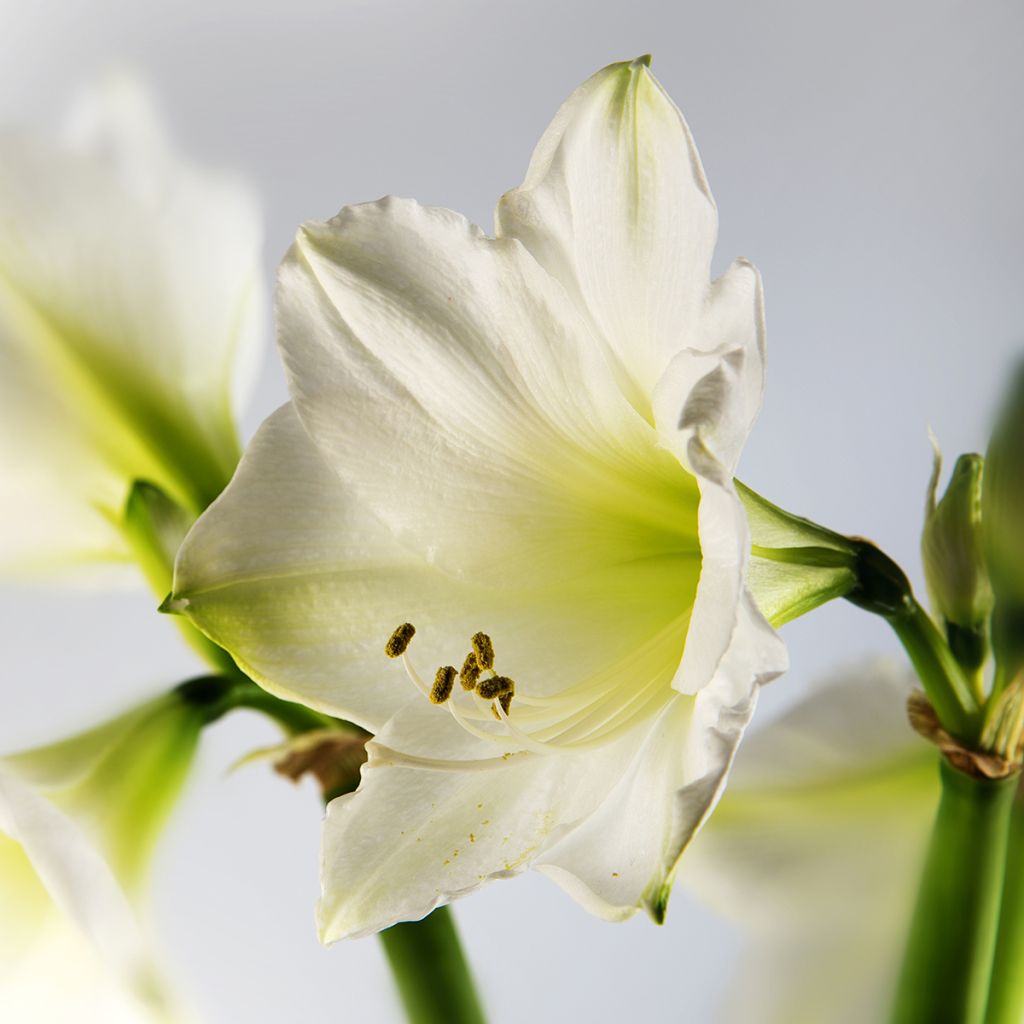

Amaryllis belladonna Ludwig Dazzler
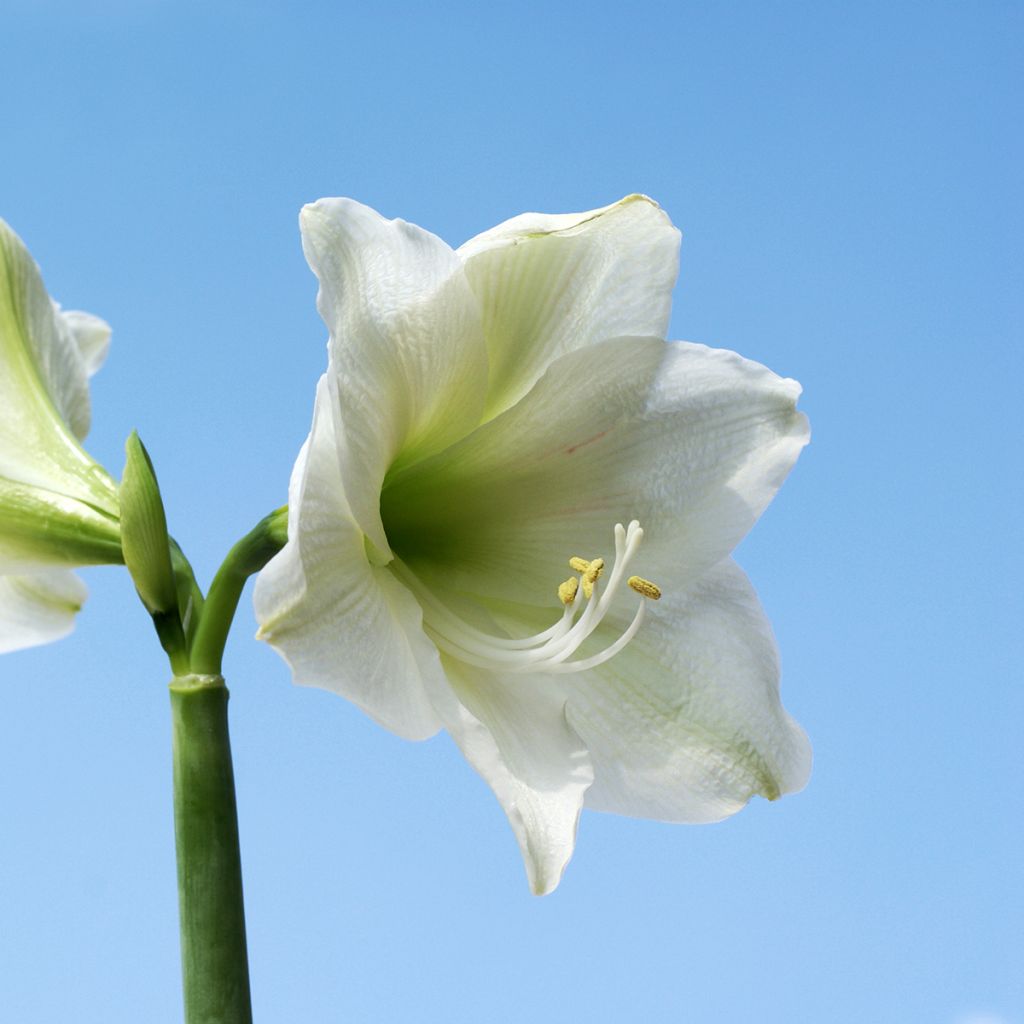

Amaryllis belladonna Ludwig Dazzler
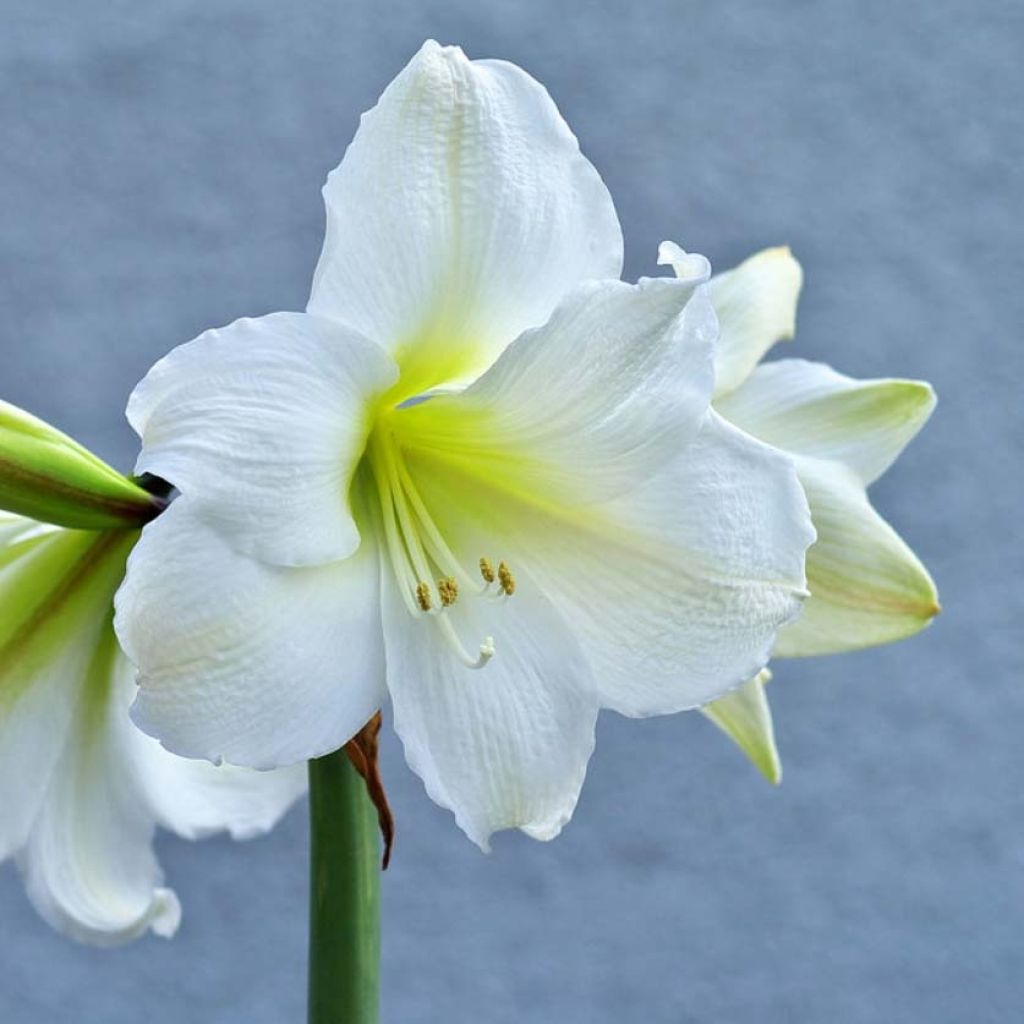

Amaryllis belladonna Ludwig Dazzler
Amaryllis belladonna Ludwig Dazzler
Amaryllis belladonna Ludwig Dazzler
Belladonna lily, Jersey lily, Naked lady, March lily
Surprising these large corollas at this time but the stem is too short.
M Dominique, 04/05/2022
Special offer!
Receive a €20 voucher for any order over €90 (excluding delivery costs, credit notes, and plastic-free options)!
1- Add your favorite plants to your cart.
2- Once you have reached €90, confirm your order (you can even choose the delivery date!).
3- As soon as your order is shipped, you will receive an email containing your voucher code, valid for 3 months (90 days).
Your voucher is unique and can only be used once, for any order with a minimum value of €20, excluding delivery costs.
Can be combined with other current offers, non-divisible and non-refundable.
Why not try an alternative variety in stock?
View all →This plant carries a 6 months recovery warranty
More information
We guarantee the quality of our plants for a full growing cycle, and will replace at our expense any plant that fails to recover under normal climatic and planting conditions.
Does this plant fit my garden?
Set up your Plantfit profile →
Description
Amaryllis belladonna 'Ludwig Dazzler' is an elegant and graceful variety with large funnel-shaped flowers. They are white, with a greenish throat topped with delicate yellow stamens, enhanced by the thick and iridescent substance of the petals. Its bulb produces flower stalks bearing 3 to 4 spectacular flowers. They bloom before the foliage, from late August to October. It is a lovely way to bring a touch of sweetness and elegance to your autumn flower beds or borders in mild climates. Elsewhere, it can be grown in a pot and stored away at the first frost.
Native to South Africa, amaryllis belladonna is a frost-sensitive plant belonging to the Amaryllidaceae family, commonly grown in pots in our latitudes. 'Ludwig Dazzler' is a superb horticultural variety with white flowers. When in full bloom, the plant forms a clump 40 to 50cm (16 to 20in) tall and 30cm (12in) wide. It produces rounded flowers that appear before the foliage, 20cm (8in) wide, composed of 6 thick and fleshy tepals, which contribute to its longevity. They are pure white to ivory white, with a green-yellow centre, releasing a bouquet of long golden-yellow stamens. 3 to 4 flowers majestically tower above a large and thick hollow stem that are quickly followed by two others. Positioned back-to-back and nestled against each other, they form a unique composition. Amaryllis leaves are wide, strap-shaped, and medium green. They dry up and disappear when the plant enters its dormant phase, a few weeks after flowering.
Planting an Amaryllis is very rewarding: this very easy to grow and fast-growing flower is perennial in mild climates. The 'Ludwig Dazzler' variety does not need companions to highlight its obvious beauty. You can plant some autumn perennials such as dwarf asters or perennial geraniums such as 'Azure Rush' at its base, just to dress up its slightly rigid stems. Ideally, plant it in the sun, along the edge of a house, to fully enjoy its beauty and subtle fragrance. Cut the stem when the flowers wither to promote re-flowering. Native to South Africa, it is grown in open ground only in mild climates, in light, moist but well-drained, humus-rich soil, in a sunny position sheltered from cold winds. It is ideal in a bed of perennials or late annuals. Elsewhere, it should be kept in a nice pot and stored away at the first signs of cold.
Do not confuse amaryllis belladonna with those of the hippeastrum family, named amaryllis due to a language misuse directly linked to an error made in the 18th century. It was Linnaeus himself who used it to name the American species. However, the name was already used for the South African species. Conventionally, the term amaryllis is used for both. To distinguish them, the mention of hippeastrum is added for the first one, and belladonna for the second. It must be said that both deserve this name: amaryllis means "sparkling" and, in classical Greek literature, the plant was the subject of a pastoral poem where the beautiful shepherdess Amaryllis dies of a love that will only be accessible to her after a terrible wound. From her blood will emerge beautiful bunches of red flowers. Since then, the term has been synonymous with haughty beauty.
Amaryllis belladonna Ludwig Dazzler in pictures
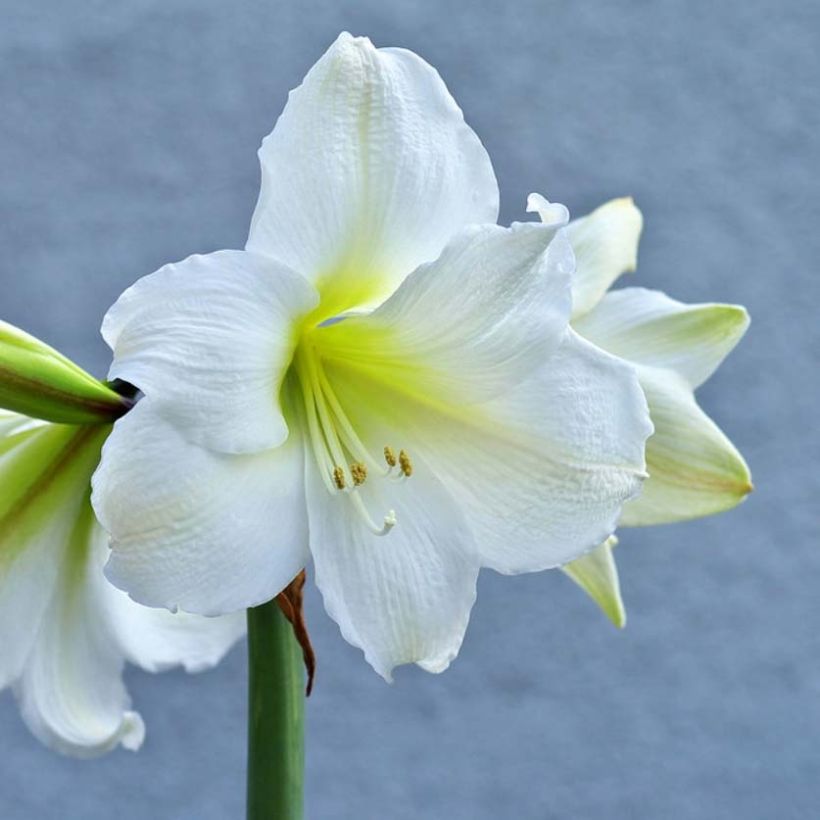

Plant habit
Flowering
Foliage
Botanical data
Amaryllis
belladonna
Ludwig Dazzler
Amaryllidaceae
Belladonna lily, Jersey lily, Naked lady, March lily
Cultivar or hybrid
Planting and care
'Ludwig Dazzler' should be planted in spring, just below the surface of the soil and 40cm (16in) apart. Apply bulb fertiliser after flowering. In warm climates, bulbs can be planted in open ground in a mixture of equal parts of potting soil, sand, and garden soil. Water moderately and keep dry in winter under a layer of dead leaves. They do not tolerate winter moisture. Leave in place for at least 5 years to obtain a nice clump for division. Beware of slugs! In other regions, grow them in pots with good potting soil and bring them indoors in winter to a well-lit place, such as a conservatory. Watch out for whiteflies and red spider mites.
Planting period
Intended location
Care
Planting & care advice
-
, onOrder confirmed
Reply from on Promesse de fleurs
Haven't found what you were looking for?
Hardiness is the lowest winter temperature a plant can endure without suffering serious damage or even dying. However, hardiness is affected by location (a sheltered area, such as a patio), protection (winter cover) and soil type (hardiness is improved by well-drained soil).

Photo Sharing Terms & Conditions
In order to encourage gardeners to interact and share their experiences, Promesse de fleurs offers various media enabling content to be uploaded onto its Site - in particular via the ‘Photo sharing’ module.
The User agrees to refrain from:
- Posting any content that is illegal, prejudicial, insulting, racist, inciteful to hatred, revisionist, contrary to public decency, that infringes on privacy or on the privacy rights of third parties, in particular the publicity rights of persons and goods, intellectual property rights, or the right to privacy.
- Submitting content on behalf of a third party;
- Impersonate the identity of a third party and/or publish any personal information about a third party;
In general, the User undertakes to refrain from any unethical behaviour.
All Content (in particular text, comments, files, images, photos, videos, creative works, etc.), which may be subject to property or intellectual property rights, image or other private rights, shall remain the property of the User, subject to the limited rights granted by the terms of the licence granted by Promesse de fleurs as stated below. Users are at liberty to publish or not to publish such Content on the Site, notably via the ‘Photo Sharing’ facility, and accept that this Content shall be made public and freely accessible, notably on the Internet.
Users further acknowledge, undertake to have ,and guarantee that they hold all necessary rights and permissions to publish such material on the Site, in particular with regard to the legislation in force pertaining to any privacy, property, intellectual property, image, or contractual rights, or rights of any other nature. By publishing such Content on the Site, Users acknowledge accepting full liability as publishers of the Content within the meaning of the law, and grant Promesse de fleurs, free of charge, an inclusive, worldwide licence for the said Content for the entire duration of its publication, including all reproduction, representation, up/downloading, displaying, performing, transmission, and storage rights.
Users also grant permission for their name to be linked to the Content and accept that this link may not always be made available.
By engaging in posting material, Users consent to their Content becoming automatically accessible on the Internet, in particular on other sites and/or blogs and/or web pages of the Promesse de fleurs site, including in particular social pages and the Promesse de fleurs catalogue.
Users may secure the removal of entrusted content free of charge by issuing a simple request via our contact form.
The flowering period indicated on our website applies to countries and regions located in USDA zone 8 (France, the United Kingdom, Ireland, the Netherlands, etc.)
It will vary according to where you live:
- In zones 9 to 10 (Italy, Spain, Greece, etc.), flowering will occur about 2 to 4 weeks earlier.
- In zones 6 to 7 (Germany, Poland, Slovenia, and lower mountainous regions), flowering will be delayed by 2 to 3 weeks.
- In zone 5 (Central Europe, Scandinavia), blooming will be delayed by 3 to 5 weeks.
In temperate climates, pruning of spring-flowering shrubs (forsythia, spireas, etc.) should be done just after flowering.
Pruning of summer-flowering shrubs (Indian Lilac, Perovskia, etc.) can be done in winter or spring.
In cold regions as well as with frost-sensitive plants, avoid pruning too early when severe frosts may still occur.
The planting period indicated on our website applies to countries and regions located in USDA zone 8 (France, United Kingdom, Ireland, Netherlands).
It will vary according to where you live:
- In Mediterranean zones (Marseille, Madrid, Milan, etc.), autumn and winter are the best planting periods.
- In continental zones (Strasbourg, Munich, Vienna, etc.), delay planting by 2 to 3 weeks in spring and bring it forward by 2 to 4 weeks in autumn.
- In mountainous regions (the Alps, Pyrenees, Carpathians, etc.), it is best to plant in late spring (May-June) or late summer (August-September).
The harvesting period indicated on our website applies to countries and regions in USDA zone 8 (France, England, Ireland, the Netherlands).
In colder areas (Scandinavia, Poland, Austria...) fruit and vegetable harvests are likely to be delayed by 3-4 weeks.
In warmer areas (Italy, Spain, Greece, etc.), harvesting will probably take place earlier, depending on weather conditions.
The sowing periods indicated on our website apply to countries and regions within USDA Zone 8 (France, UK, Ireland, Netherlands).
In colder areas (Scandinavia, Poland, Austria...), delay any outdoor sowing by 3-4 weeks, or sow under glass.
In warmer climes (Italy, Spain, Greece, etc.), bring outdoor sowing forward by a few weeks.






























